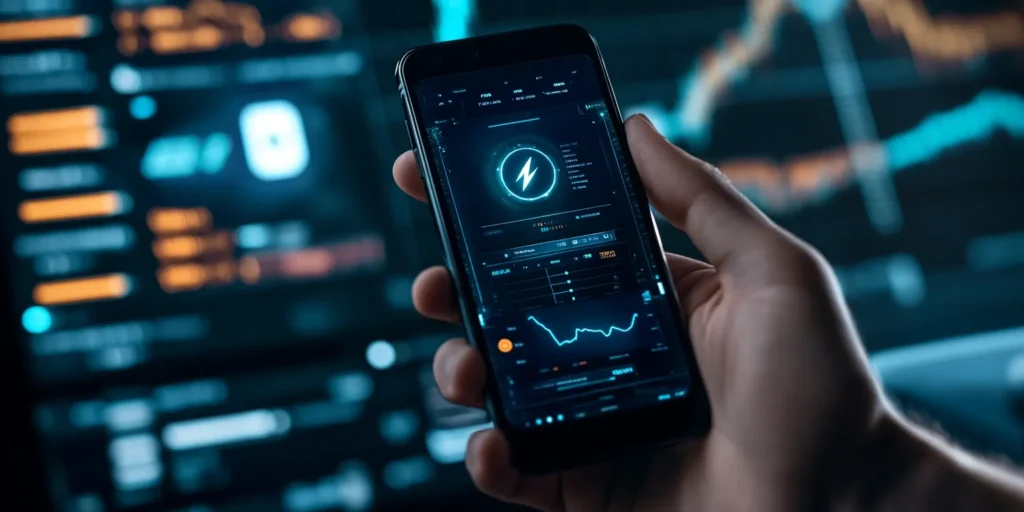What is a crypto mining setup?
Think of a crypto mining setup as the engine room of your digital money factory. It’s the combination of hardware and software that turns electricity into coins. Whether you’re aiming for Bitcoin or altcoins, the setup you choose defines how profitable and scalable your mining journey will be. Building a solid crypto mining setup is the first step toward consistent, long-term earnings in the blockchain world.
Types of crypto mining setups
There are three main types of mining setups, each suited to different goals and budgets:
- ASICs: Purpose-built machines designed to mine specific coins like Bitcoin. Blazing fast and efficient, but they only do one job.
- GPU rigs: Multi-purpose builds using several graphics cards. Great for coins like Ethereum Classic, Ergo, or Ravencoin.
- CPU mining: Uses your computer’s processor. It’s low power, low cost, and best for experimenting with niche coins.
Choosing the right type of crypto mining setup depends on your resources, technical skills, and the coins you want to target.
Comparison: ASIC vs GPU vs CPU mining
| Setup Type | Pros | Cons | Best For |
|---|---|---|---|
| ASIC | High efficiency, low maintenance | Expensive, limited to one coin | Professional miners |
| GPU | Flexible, upgradeable, resellable | Higher power use, more complex to build | Intermediate users |
| CPU | Low cost, great for learning | Low profits, limited coins | Beginners |
Understanding these differences helps you plan a mining strategy that matches your investment level and technical expertise.
Essential components of a crypto mining setup
Let’s break down what you’ll need to build your rig from the ground up:
- Motherboard: Choose one with multiple PCIe slots for your GPUs.
- CPU: Budget models are enough, just check compatibility.
- RAM: 8 GB is usually plenty.
- Storage: A 120 GB SSD for fast boot times and stable mining software.
- GPUs: Focus on models known for efficiency and durability.
- Power Supply: Wattage must cover all GPUs plus 20% extra.
- Open Frame: Helps keep things cool and accessible.
- PCIe Risers: Crucial for spacing out GPUs correctly.
- Cooling: Extra fans or liquid cooling prevent thermal throttling.
Every component in your crypto mining setup plays a role in balancing cost, efficiency, and long-term profitability.
Budget-based component selection
Your budget directly shapes the strength of your crypto mining setup. Here’s a quick comparison to guide your decisions:
| Budget Level | Setup Details |
|---|---|
| Low Budget | One or two used GPUs, second-hand PSU, basic motherboard, test with crypto mining app. |
| Mid Budget | Three to five mid-range GPUs, new PSU, SSD, quality risers, solid mining frame. |
| High Budget | High-efficiency GPUs, modular PSU, liquid cooling, custom-built frame, professional monitoring setup. |
Choosing the right balance between upfront investment and long-term rewards is key to building a sustainable operation.
Step-by-step: How to build your crypto mining setup
Follow these essential steps to assemble your mining rig:
- Build the core: Mount CPU, RAM, and SSD on the motherboard. Place everything on the mining frame.
- Connect GPUs: Use risers to install them securely and give them breathing room.
- Power it up: Connect the power supply to motherboard, GPUs, and risers. Triple-check stability.
- Install the OS: Go with Windows or mining-specific Linux distros like HiveOS or SimpleMining.
- Set up mining software: Choose from NiceHash, CGMiner, PhoenixMiner, or others depending on your coin.
- Configure your wallet: Needed to receive earnings. Use a secure and reputable provider.
- Join a mining pool: Boost your odds of earning regular payouts by contributing to group mining.
- Monitor performance: Use dashboards and apps to track temps, hash rates, and uptime.
Each step builds on the previous one, ensuring your crypto mining setup runs smoothly from day one.
Common mistakes to avoid
Even experienced builders sometimes make mistakes. Watch out for these common pitfalls:
- Buying incompatible hardware.
- Underestimating electricity costs.
- Ignoring proper cooling and airflow.
- Skipping BIOS or software optimization.
- Not cleaning your rig regularly.
Preventing these issues early can save you from costly downtime and unexpected repair bills.
Final checklist before mining
Before firing up your crypto mining setup, make sure you’ve double-checked the essentials:
- Is everything securely mounted and plugged in?
- Are all power connectors used properly (CPU, GPU, risers)?
- Is your operating system updated?
- Is mining software correctly configured and benchmarked?
- Have you joined a mining pool and entered your wallet address?
Completing this checklist gives you the confidence to start mining without unexpected issues.
The bottom line
Building your crypto mining setup is more than a tech project—it is your gateway into the cryptocurrency economy. A well-planned setup balances cost, performance, and growth potential, setting you up for success whether you are a beginner or a scaling miner.
Focus on what matches your current budget and skills. If you want to save money while getting started, explore cheap crypto mining options or test performance with tools like crypto mining app. A smart crypto mining setup today could be your foundation for long-term digital wealth tomorrow.



